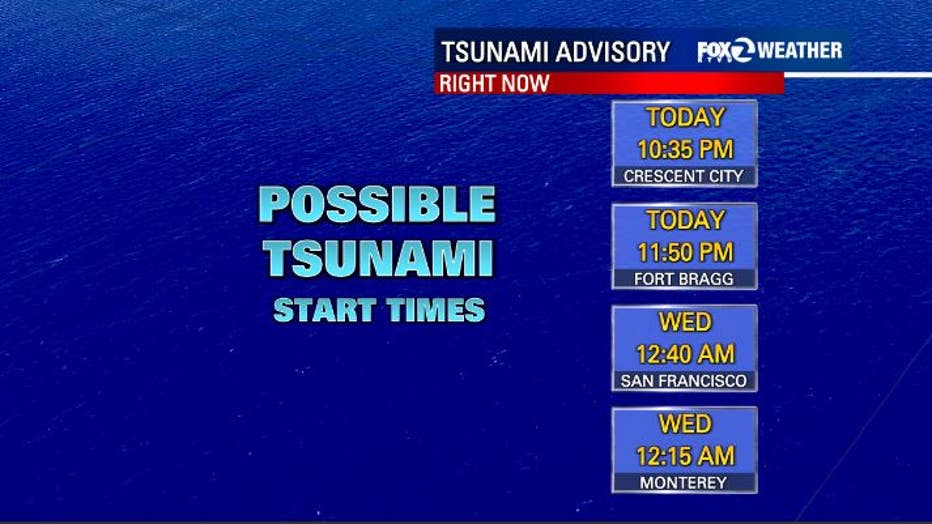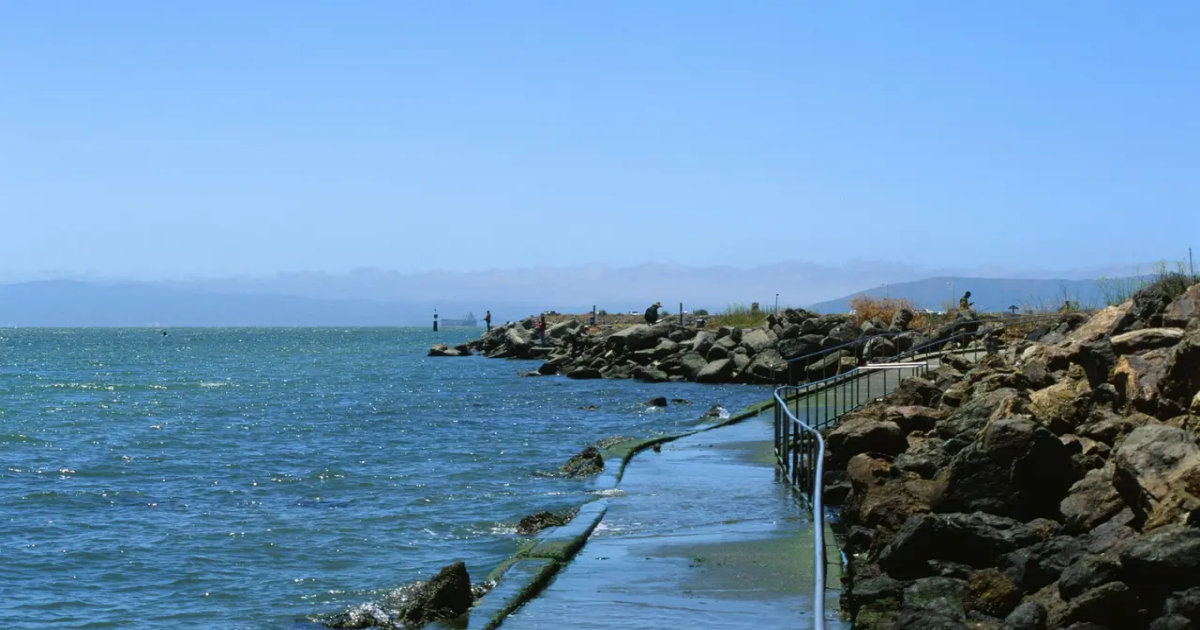SAN FRANCISCO – The National Weather Service issued a tsunami advisory for the California coast Tuesday night following a series of large earthquakes in Russia.
The tsunami advisory is in effect from the British Columbia-Alaska border to the California-Mexico border, the NWS reports.
The advisory was upgraded around 6:40 p.m. from a tsunami watch issued earlier in the evening.
Tsunami expected shortly after midnight in the Bay Area
The National Weather Service said a tsunami could arrive at 12:15 a.m. for the Monterey coastline and 12:40 a.m. for San Francisco.
Up north in Crescent City, a tsunami could arrive as early as 10:35 p.m. and at 11:50 p.m. in Fort Bragg.
Waves along the Bay Area coastline could reach about 1-foot, KTVU meteorologist Roberta Gonzalez says.
Though, she urges conditions are fluid and that things can change quickly.
Tsunami arrival time in Hawaii
The National Weather Service in Hawaii estimates the first tsunami waves may hit the Hawaiian Islands around 7:17 p.m. HST (10:17 p.m. PT.)
Tsunami warning in Humbolt, Del Norte
The National Weather Service issued a tsunami warning for areas in far Northern California, including the northern Humboldt coast and coastal Del Norte County.
“Tsunami warnings mean that a tsunami with significant inundation is possible or is already occurring. Tsunamis are a series of waves dangerous many hours after initial arrival time. The first wave may not be the largest,” the weather agency says.
The NWS says the warning will stay in effect “until further notice.”

KTVU meteorologists say: Don’t panic
“Stay away from the coast if you live at the coast,” KTVU’s meteorologist Roberta Gonzalez says. “The one message we want to get across is: Just stay alert right now. We’re just looking at dangerous currents, dangerous waves. Do not go into the ocean.”
Despite the risk in the Bay Area, there’s no need to panic, she says.
KTVU meteorologists emphasize, though, that conditions are fluid and can change very quickly.
“Don’t panic. We’re seeing a lot of people panicking saying ‘I need to go to higher ground,’” Gonzalez said.
Waves along the Bay Area coastline could reach about 1-foot, Gonzalez says.
KTVU’s Mark Tamayo says a tsunami warning – not the advisory that’s currently in effect – would mean more significant impact for the Bay Area.
“It’s not a warning for us, meaning we could have huge big-time problems, but still an advisory. Could lead to some dangerous currents out there, and that’s in place right now, that tsunami advisory,” he said.

What is a tsunami advisory?
A tsunami advisory is the second-highest alert, under a warning, according to the NWS.
An advisory is when the NWS urges residents to take action.
“A tsunami with potential for strong currents or waves dangerous to those in or very near the water is expected or occurring,” the NWS says. “There may be flooding of beach and harbor areas. Stay out of the water and away from beaches and waterways. Follow instructions from local officials.”
A tsunami watch is the second-lowest safety alert, according to the NWS.
The weather agency defines a tsunami watch as: “A distant earthquake has occurred. A tsunami is possible. Stay tuned for more information. Be prepared to take action if necessary.”
A tsunami warning, the highest alert, is issued when officials say “dangerous coastal flooding” and “powerful currents” are possible.
“A tsunami that may cause widespread flooding is expected or occurring. Dangerous coastal flooding and powerful currents are possible and may continue for several hours or days after initial arrival,” the NWS says.
The Source: National Weather Service, KTVU meteorologists
